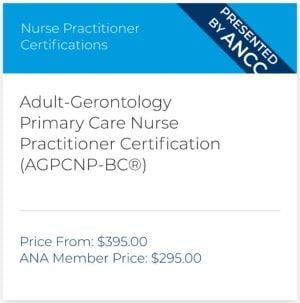An Innovative Approach to Addressing Hypertensive Disorders of Pregnancy (HDP)
4 min read
As early as nursing school, I naturally gravitated towards obstetrics. I knew that I wanted to be part of women’s lives during their reproductive years, and positively impact their birth story. It takes a unique personality to be a birth worker, one that excels clinically and efficiently during this potentially life-threatening time, especially in hospitalized, high-risk women, encompassing the utmost level of compassion. Pregnancy and the postpartum period are chockfull of opportunities to educate patients, impact their journey in a positive way, and improve maternal and fetal outcomes. As an added incentive, birth is magic, and women are warriors… who wouldn’t want to be a part of that? It felt like a no-brainer, and I was grateful to be hired as a new graduate into a high-risk obstetrics unit.
After working in high-risk obstetrics for eight years, I became a family nurse practitioner (FNP), subsequently going back to become a Doctor of Nursing Practice (DNP). My role pivoted into a Clinical Research Nurse Scientist position, and my focus is aimed at improving outcomes for women after they’ve experienced an adverse pregnancy outcome (APO), specifically hypertensive disorders of pregnancy (HDP).
Rethinking How We Provide Care
While working as an RN, I had countless experiences that made me rethink the way that we provide care to women, specifically regarding blood pressure (BP) elevation in the postpartum period. I knew that there had to be a more impactful care delivery model to educate, monitor, manage and support these women after they left the hospital that improved their short and long-term health outcomes. Heart disease is the leading cause of death for women, and there is a known significant link between HDP and future cardiovascular disease (CVD), yet we lacked a standardized approach for these women with relatively predictable postpartum patterns and trajectories. With that, I set out to first establish and validate my concerns, then find the solution. Alarmingly, readmissions for HDP are quite high, and come at a significant health, psychological, and financial burden. Most of the time, women with HDP are discharged without sufficient or standardized education, often without follow-up with a provider for weeks after discharge, sometimes even without a blood pressure (BP) cuff.

Creating a Standardized Approach to the Management of Women With HDP
In response, we created a standardized approach to the management of women with HDP, including holistic education upon discharge, a virtual visit at 48-72 hours post discharge with a nurse practitioner (NP) to evaluate BPs and antihypertensive medications and the need for titration based off standardized protocols, then virtual visits as needed within the first 6 weeks postpartum. Participants also received Bluetooth-enabled BP cuffs and access to an application that automatically uploaded BPs to a provider monitored portal for an efficient workflow and patient-provider communication. This pilot program resulted in overwhelmingly positive satisfaction rates, no hospital readmissions, and efficient management of elevated BPs. Because of our excellent preliminary results, our team decided to systematize these protocols to show statistical significance in differences in outcomes between women who are enrolled in standardized care, and women who are not, utilizing NP driven protocols. This standardized approach is currently being finalized as we apply widely for funding opportunities. Standardized care delivery models utilizing remote monitoring and NP driven protocols boast both a dynamic and innovative approach to interdisciplinary care and the utilization of technological advancement by healthcare systems.
Advice for Other Clinical Nurse Scientists
Some advice that I received from mentors throughout this process that resonated with me and may be helpful for other Clinical Nurse Scientists in similar situations:
- Cast a wide net. Don’t expect a yes from every application you submit. Expect that it may take a while to perfect your proposals and begin your clinical research- that is totally normal, try not to be discouraged by the no’s. Take the feedback and strengthen your protocol and application.
- Traditional medical structures have not historically recognized NP-led protocols as valid mechanisms for care delivery. You may be met with some resistance as you try to implement such protocols.
- Use the opportunity to show the interdisciplinary teams at your facility what stellar advanced nursing care is capable of. Work with other team members to get a rounded approach- nurses, nurse practitioners, physicians, psychologist, clinical partners, etc... each discipline has a wealth of knowledge and unique perspective to offer. Welcome that feedback, and again, use it to strengthen your approach.
The journey to redefine care for women with hypertensive disorders post-pregnancy has been both challenging and rewarding. It highlights the critical role of **nursing innovation** in overcoming healthcare delivery barriers and enhancing patient care. As we continue to push the boundaries of what's possible in healthcare, I'm reminded of the incredible opportunity we have as Clinical Research Nurse Scientists to shape the future of patient care.
Remember, the goal is to create and provide unparalleled and innovative care to our patient population. Now more than ever, care is being provided in unique and creative ways, allowing for providers to break through delivery barriers and address healthcare access better than ever before.
This is indeed an exhilarating time to be at the forefront of nursing innovation driving change that directly impacts patient well-being and outcomes. Let's continue to explore, innovate, and lead with compassion, backed by evidence-based practice and the relentless pursuit of excellence in patient care.
What an incredible time to be a Clinical Research Nurse Scientist!
Resources
How to Become a Research Nurse
Types of Nurse Practitioner Specialties
Understanding the Doctor of Nursing Practice (DNP) Degree
Benefits of Mentorship in Nursing: Why It’s Essential
Images sourced from Adobe Creative Cloud



